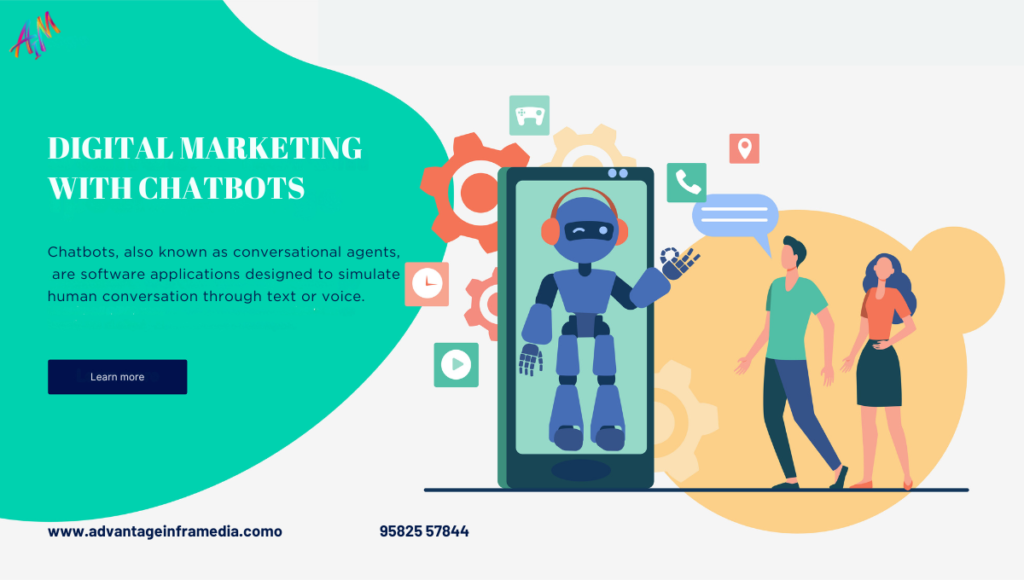Introduction
Definition and Overview
-
- What is a chatbot?
- Brief history and evolution of chatbot.
Importance of Chatbots
-
-
- Growing significance in customer service and business operations.
- Current market trends and statistics.
-
Understanding Chatbots
-
- Rule-based chatbot.
- AI-based chatbot.
- Hybrid chatbot.
Technology Behind Chatbots
-
-
- Natural Language Processing (NLP).
- Machine Learning (ML).
- Integration with other technologies (APIs, databases, etc.).
-
Benefits of Using Chatbots
Enhanced Customer Service
-
- 24/7 availability.
- Instant responses.
- Handling multiple queries simultaneously.
Cost Efficiency
-
-
- Reduction in operational costs.
- Efficient resource allocation.
-
Personalized Experience
-
-
-
- Understanding user preferences.
- Tailored responses and recommendations.
-
-
Data Collection and Analysis
-
-
-
-
- Gathering customer insights.
- Improving products/services based on feedback.
-
-
-
Implementing Chatbots in Business
Key Considerations
-
- Defining the purpose and scope.
- Choosing the right type of chatbot.
Steps to Develop a Chatbot
-
-
- Requirement analysis.
- Designing the conversation flow.
- Developing and testing.
- Deployment and maintenance.
-
Tools and Platforms
-
-
-
- Popular chatbot development platforms (e.g., Dialogflow, Microsoft Bot Framework, etc.).
- Comparison of different platforms.
-
-
Challenges and Solutions
Common Challenges
-
- Understanding context and intent.
- Handling complex queries.
- Ensuring seamless human-bot interaction.
Solutions and Best Practices
-
- Continuous training and improvement.
- Implementing fallback mechanisms.
- Regular updates and monitoring.
Chapter 5: Real-World Applications of Chatbots
Customer Support
-
- Examples from various industries (e.g., e-commerce, banking, healthcare).
Marketing and Sales
-
- Lead generation and nurturing.
- Customer engagement and retention.
Internal Business Processes
-
- HR and recruitment.
- IT support.
Future of Chatbots
Trends and Innovations
-
- Advancements in AI and NLP.
- Integration with other emerging technologies (e.g., IoT, blockchain).
Potential Impact
-
- Shaping future customer interactions.
- Redefining business processes and strategies.
Conclusion
Recap of Key Points
-
- Summarize the benefits and impact of chatbot.
Final Thoughts
-
- The evolving role of chatbot in the digital landscape.
- Encouragement for businesses to leverage chatbot technology.
Introduction
Definition and Overview
Chatbots, also known as conversational agents, are software applications designed to simulate human conversation through text or voice interactions. The concept of chatbot dates back to the 1960s with the creation of ELIZA, a simple computer program that mimicked human conversation. Over the decades, chatbot have evolved significantly, thanks to advancements in artificial intelligence (AI) and natural language processing (NLP).
Importance of Chatbots
In today’s fast-paced digital world, chatbot have become essential tools for businesses to enhance customer interaction, streamline operations, and provide instant support. According to recent studies, the chatbot market is expected to reach $9.4 billion by 2024, highlighting their growing significance.
Understanding Chatbots
Types of Chatbots
- Rule-based Chatbots: Operate on predefined rules and can handle specific tasks. They are simple but limited in their capabilities.
- AI-based Chatbots: Utilize machine learning and NLP to understand and respond to complex queries. They can learn from interactions and improve over time.
- Hybrid Chatbots: Combine the best of both worlds, using rules for basic queries and AI for more complex interactions.
Technology Behind Chatbots
Chatbot rely on various technologies to function effectively:
- Natural Language Processing (NLP): Enables chatbot to understand and process human language.
- Machine Learning (ML): Allows chatbot to learn from past interactions and improve responses.
- Integration with Other Technologies: APIs, databases, and other systems help chatbot access and use relevant information.
Benefits of Using Chatbots
Enhanced Customer Service
Chatbot provide round-the-clock customer support, ensuring that queries are addressed promptly. They can handle multiple interactions simultaneously, reducing wait times and improving customer satisfaction. Moreover, chatbot can maintain consistency in responses, ensuring that all customers receive the same level of service regardless of the time of day.
Cost Efficiency
By automating routine tasks, chatbot reduce the need for human intervention, leading to significant cost savings. They also help businesses allocate resources more efficiently, focusing human agents on more complex issues that require personal attention. This efficiency not only saves money but also enhances operational scalability, allowing businesses to handle increased customer inquiries without proportionally increasing staffing costs.
Personalized Experience
Chatbot can analyze user data in real-time to provide personalized recommendations and responses. This level of customization enhances the user experience by offering tailored solutions based on individual preferences, purchase history, and browsing behavior. For instance, in e-commerce, chatbot can suggest products that match a customer’s previous purchases or preferences, thereby increasing the likelihood of conversion and fostering customer loyalty.
Data Collection and Analysis
One of the most valuable aspects of chatbot is their ability to gather and analyze vast amounts of data from customer interactions. This data provides businesses with actionable insights into customer preferences, pain points, and behavior patterns. By understanding these insights, businesses can make informed decisions about product development, marketing strategies, and overall customer experience enhancements. For example, analytics derived from chatbot interactions can reveal common customer issues that need addressing or identify trends in customer preferences that can inform future product offerings.
Challenges and Solutions
Common Challenges
- Understanding Context and Intent: One of the primary challenges faced by chatbots is accurately understanding the context and intent behind user queries. Natural language is inherently complex and ambiguous, making it challenging for chatbots to interpret user requests correctly every time.Solution: To address this challenge, chatbot developers employ sophisticated natural language processing (NLP) algorithms combined with machine learning (ML) models. These technologies enable chatbots to analyze user input, identify key words and phrases, and derive the intended meaning through contextual understanding. Continuous training of NLP models using large datasets further improves accuracy over time.
- Handling Complex Queries: Some user queries may be complex or require nuanced responses that go beyond simple rule-based algorithms.Solution: Hybrid chatbots, which combine rule-based systems with AI capabilities, are increasingly adopted to handle such queries effectively. By leveraging AI for complex scenarios while relying on predefined rules for routine tasks, hybrid chatbots strike a balance between flexibility and reliability in responding to user queries.
- Ensuring Seamless Human-Bot Interaction: Maintaining a natural and engaging conversation flow is crucial for a positive user experience. Abrupt transitions or robotic responses can frustrate users and diminish the effectiveness of chatbots.Solution: Designing intuitive conversation flows and incorporating human-like language patterns into chatbot responses can enhance interaction quality. Additionally, implementing fallback mechanisms that gracefully handle queries outside the chatbot’s scope or understanding can mitigate user dissatisfaction and maintain engagement.
Solutions and Best Practices
- Continuous Training and Improvement: Chatbots are not static systems; they require ongoing refinement and improvement to stay effective. Regularly updating chatbot algorithms with new data and user interactions ensures that they remain relevant and responsive to evolving user needs.
- Implementing Fallback Mechanisms: Fallback mechanisms serve as safety nets for instances where the chatbot cannot provide a satisfactory response. By acknowledging the limitation and offering alternative actions or escalating the query to a human agent, fallback mechanisms prevent user frustration and maintain interaction continuity.
- Regular Updates and Monitoring: Monitoring chatbot performance metrics, such as response accuracy, user satisfaction rates, and interaction frequency, is essential for identifying areas of improvement. By analyzing these metrics, businesses can identify patterns, optimize chatbot functionalities, and implement timely updates to enhance overall performance.
Real-World Applications of Chatbots
Customer Support
Chatbots are widely used in various industries to provide customer support. For example, e-commerce platforms use chatbots to assist with order tracking, while banks offer chatbots for account inquiries and transaction details.
Marketing and Sales
In marketing and sales, chatbots play a crucial role in lead generation and nurturing. They engage potential customers, answer their queries, and guide them through the sales funnel, ultimately boosting conversion rates.
Internal Business Processes
Chatbots also streamline internal processes such as HR and IT support. For instance, HR chatbots can assist employees with onboarding, leave requests, and policy information, while IT chatbots handle technical support queries.
Future of Chatbots
Trends and Innovations
As technology continues to evolve, several emerging trends and innovations are shaping the future of chatbots:
- Advancements in AI and NLP: Continued advancements in artificial intelligence and natural language processing are enhancing chatbots’ ability to understand and respond to human language with greater accuracy and naturalness.
- Integration with Emerging Technologies: Chatbots are increasingly integrated with other emerging technologies such as machine learning, internet of things (IoT), and blockchain. These integrations expand chatbots’ capabilities beyond traditional customer service applications into areas like smart home automation, personalized healthcare assistance, and secure financial transactions.
Potential Impact
The future impact of chatbot extends beyond customer interaction efficiencies to broader implications for business strategy and consumer behavior:
- Redefining Customer Engagement: Chatbot will play a pivotal role in shaping personalized customer experiences across multiple touchpoints, from pre-purchase inquiries to post-sale support and loyalty programs.
- Enhancing Operational Efficiency: Businesses will leverage chatbot to streamline internal processes, automate routine tasks, and optimize resource allocation, thereby improving overall operational efficiency and productivity.
- Driving Innovation and Competitive Advantage: Organizations that embrace advanced chatbot technologies early on will gain a competitive edge by offering superior customer service, anticipating market trends, and fostering innovation in product development and service delivery.
Conclusion
Recap of Key Points
In summary, chatbot represent a transformative technology that offers substantial benefits across various aspects of business operations and customer engagement. From enhancing customer service and operational efficiency to driving innovation and personalizing user experiences, chatbot are poised to play a pivotal role in the digital economy’s future.
Final Thoughts
As businesses navigate the evolving landscape of customer expectations and technological advancements, integrating chatbot technology strategically can yield significant advantages. By understanding the benefits, challenges, and future potential of chatbot, businesses can harness this technology to not only meet but exceed customer expectations in an increasingly digital world.




